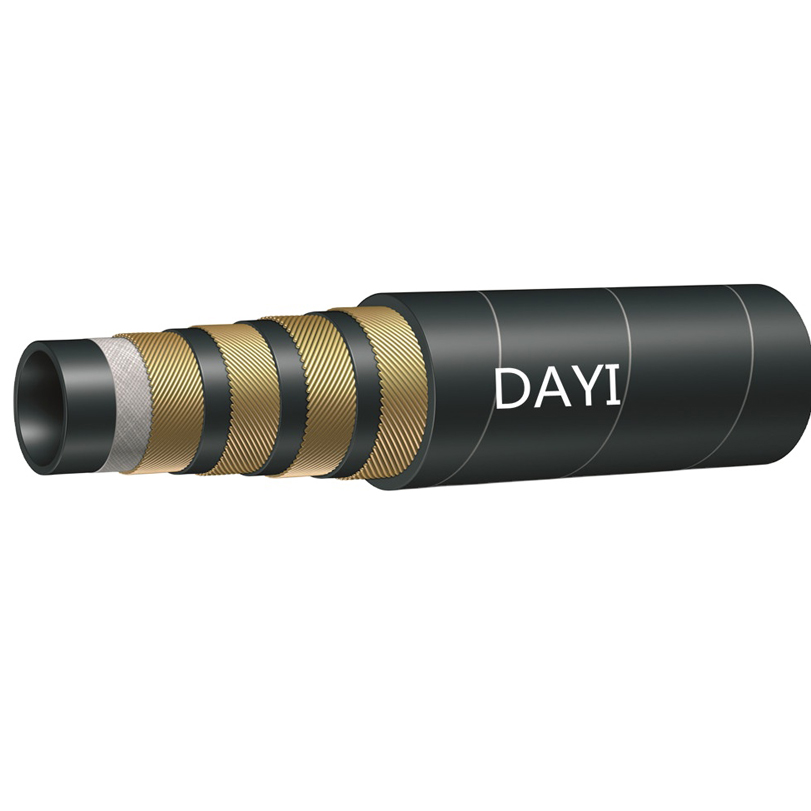335345435
Th10 . 12, 2024 08:53 Back to list
thermoplastic hydraulic hose
Thermoplastic Hydraulic Hose A Comprehensive Overview
Thermoplastic hydraulic hoses are critical components in various industrial applications. As the name implies, these hoses are crafted from thermoplastic materials, which set them apart from traditional rubber hoses. With the increasing demand for versatile and efficient hydraulic systems, understanding the characteristics, benefits, and applications of thermoplastic hydraulic hoses is essential for industry professionals.
Material Composition and Characteristics
Thermoplastic hydraulic hoses are primarily made from thermoplastics, primarily polyamide (nylon) and polyurethane. These materials are known for their excellent chemical resistance, durability, and flexibility. Unlike rubber hoses, thermoplastic hoses exhibit superior resistance to abrasion, ensuring longevity even in harsh working environments. The lightweight nature of thermoplastic materials also provides an advantage, making handling and installation significantly easier.
One of the defining characteristics of thermoplastic hoses is their ability to withstand high pressure and temperature variations. These hoses are typically rated for pressures ranging from 350 to 6500 psi (pounds per square inch), depending on the specific application. Furthermore, thermoplastic hoses can operate effectively in temperatures ranging from -40°F to 212°F, making them suitable for a wide range of hydraulic applications.
Advantages of Thermoplastic Hydraulic Hoses
1. Weight Savings Compared to rubber hoses, thermoplastic hoses are significantly lighter, making them easier to transport and install. This can lead to reduced labor costs and improved productivity in the field.
2. Enhanced Flexibility Thermoplastic hoses are highly flexible, which allows for easier routing in tight spaces. This flexibility also reduces the risk of kinking or damaging the hose during installation and operation.
3. Chemical Resistance Thermoplastic materials provide excellent resistance to a wide variety of chemicals, oils, and fluids. This property is especially crucial in industries such as agriculture, where exposure to various chemicals is prevalent.
4. Low Permeation With lower permeability rates than rubber hoses, thermoplastic hoses minimize the risk of fluid loss, making them a more efficient choice for hydraulic applications.
5. Temperature Tolerance The ability to withstand both low and high temperatures without compromising performance is a significant advantage of thermoplastic hoses, making them suitable for numerous applications.
thermoplastic hydraulic hose

6. Easier Recycling As industries increasingly focus on sustainability, thermoplastic materials offer an eco-friendly alternative. They can be recycled more readily than their rubber counterparts, aligning with global efforts toward reducing environmental impact.
Applications of Thermoplastic Hydraulic Hoses
The versatility of thermoplastic hydraulic hoses allows their use across a variety of industries. Here are some notable applications
- Construction Equipment Hydraulic systems in backhoes, excavators, and bulldozers often employ thermoplastic hoses due to their durability and flexibility, crucial for functioning in tough terrains.
- Agricultural Machinery In farming equipment, thermoplastic hoses play a vital role in delivering hydraulic power for various operations, from planting to harvesting.
- Transportation With the rise of electric and hydraulic vehicles, thermoplastic hydraulic hoses are finding applications in braking systems and other hydraulic components where weight and flexibility are paramount.
- Aerospace The aviation industry leverages thermoplastic hoses for hydraulic systems in aircraft, benefiting from their lightweight nature and resistance to environmental factors.
- Marine Applications Thermoplastic hoses are also utilized in marine systems, where exposure to saltwater and other harsh conditions require durable and resilient materials.
Conclusion
Thermoplastic hydraulic hoses represent a significant advancement in hydraulic technology. Their unique properties—such as lightweight, flexibility, chemical resistance, and eco-friendliness—position them as an optimal choice for numerous applications across numerous industries. As technology evolves and the demand for efficient hydraulic systems continues to grow, the importance of understanding and utilizing thermoplastic hydraulic hoses will only increase. For industry professionals, staying informed about the latest advancements and applications in thermoplastic hose technology is crucial for ensuring optimal performance and sustainability in hydraulic systems.
-
Durable Pressure Washer Rubber Hose for Hot Water & High Flexibility
NewsJul.22,2025
-
Twin Hydraulic Hose for Efficient Fluid Transfer | Durable & Flexible
NewsJul.22,2025
-
Twin Hydraulic Hose | High Pressure & Durable
NewsJul.21,2025
-
Discount Hydraulic Hose Factories | Top Quality & Discounts
NewsJul.20,2025
-
EN856 4SP Hydraulic Hose - High Pressure & Durable
NewsJul.20,2025
-
SAE 100 R17 Black Smooth Cover Hydraulic Hose
NewsMar.07,2025



